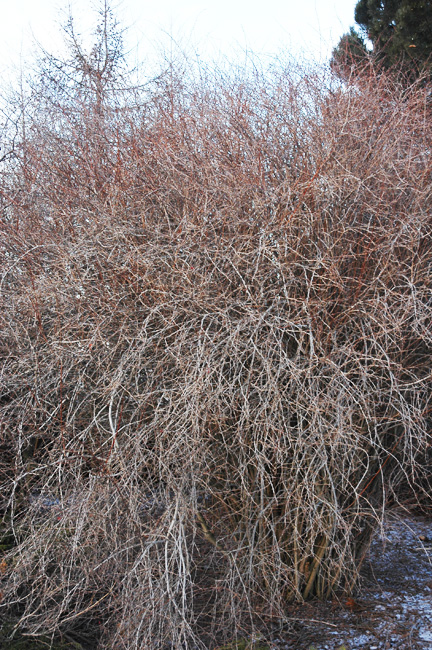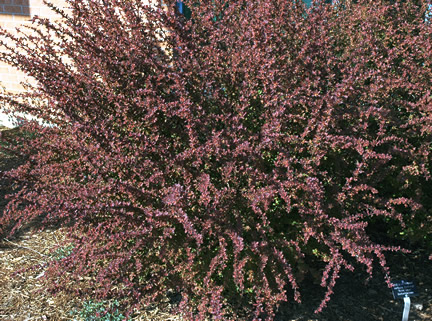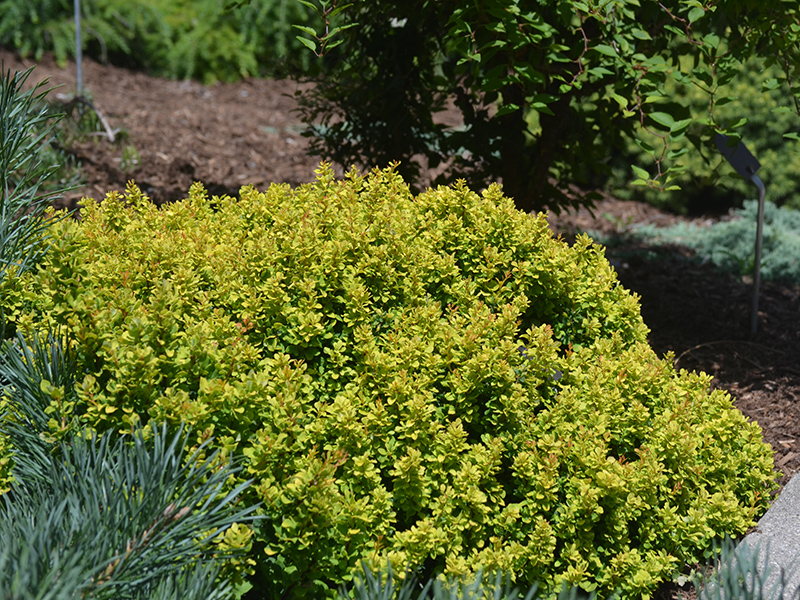| ID Characteristic | B. thunbergii is most readily distinguished by the flowers being produced in umbels, not racemes. |
| Landscape | Works well in gardens and as borders and groundcover. |
| Propagation | Propagate by seed or by cuttings. |
| Cultivation | Will thrive in any soil type that is not waterlogged, and should be grown in full sun. |
| Pests | The bacteria Pseudomonas berberidis may cause black spots on leaves, and the berberry aphid (Liosomaphis berberidis) may also be a problem. |
| Notable Specimens | The Gardens of Fanshawe College, London, Ontario, Canada. |
| Bark/Stem Description | Stems are angular, dark red and grooved, with simple spines. |
| Leaf Description | The leaves are green to blue-green, very small, spatula to oval shaped, 12-24 mm long and 3-15 mm broad; they are produced in clusters of 2-6 on a dwarf shoot in the axil of each spine. |
| Flower Description | The flowers are pale yellow, 5-8 mm diameter, produced in drooping 1-1.5 cm long umbrella-shaped clusters. |
| Fruit Description | The edible fruit is a glossy bright red to orange-red, ovoid berry 7-10 mm long and 4-7 mm broad, containing a single seed. They mature during late summer and autumn and persist through the winter. |


